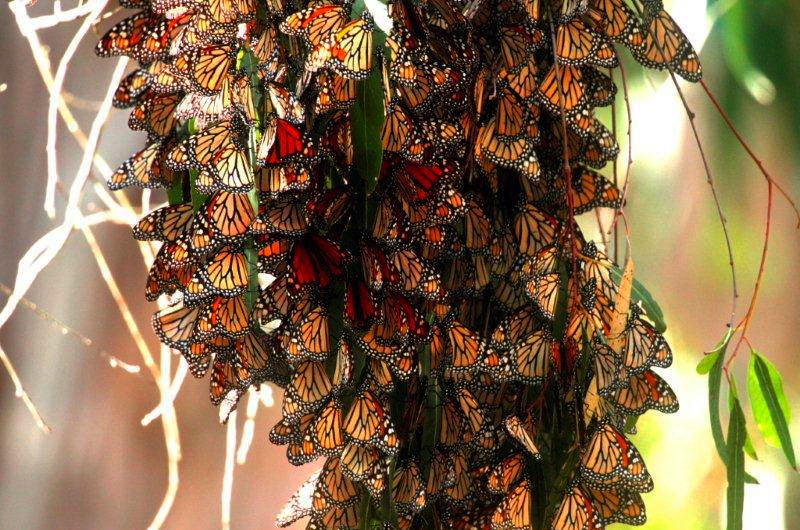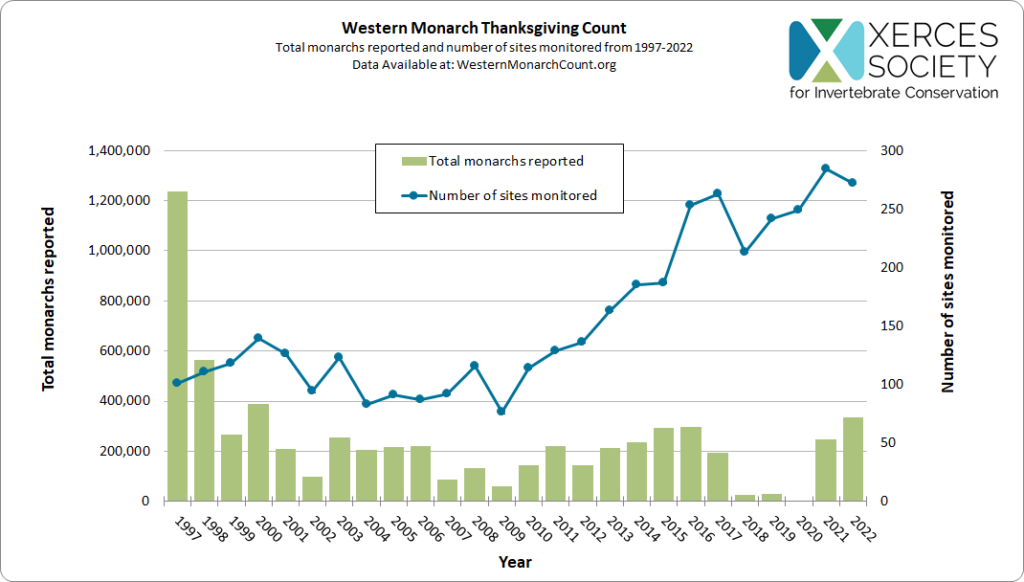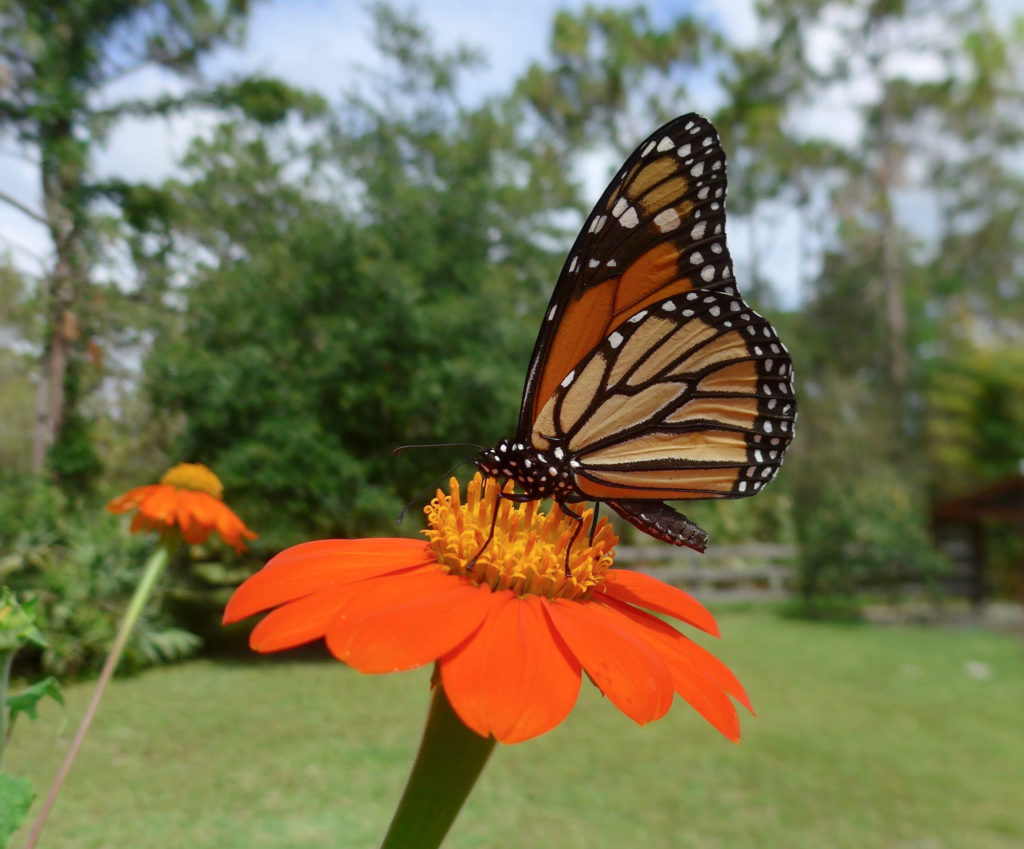Monarch butterflies are known for their incredible, long-distance migration from as far north as Canada to their wintering grounds in Central Mexico. But did you know that not all monarchs over-winter in Mexico?

Monarchs living west of the Rocky Mountain range in North America overwinter in California along the Pacific coast near Santa Cruz and San Diego. Here microclimatic conditions are very similar to that in central Mexico. Monarchs roost in eucalyptus, Monterey pines, and Monterey cypresses in California.

Every Thanksgiving and New Years the Xerces Society along with hundreds of volunteers count the number of monarch butterflies at overwintering sites in the West.

The South Carolina coast is also home to a winter population of monarch butterflies, according to a recently published study published by South Carolina Department of Natural Resources (SCDNR). The research indicates that the insects live year-round in South Carolina, relying on swamps in the spring, summer, and fall and sea islands in the winter.

And then there is Florida! Because of the warm climate and continuous availability of host plants, much of Florida’s monarch population stays in the state year-round and breeds continuously throughout the year. Year-round residents are more common in southern Florida, as cold winter temperatures in northern Florida can kill monarchs at any life stage.

In addition to resident populations, the state also hosts migratory monarchs from northeastern North America, but there are competing hypotheses regarding how these migrants travel to, from, or through Florida.
When I lived in Central Florida I observed that monarch populations increased in late November. According to Dr. Karen Oberhauser, Florida is a terminal destination for migrating monarchs from the northeastern United States and southeastern Canada. These monarchs fly into Florida but don’t disperse out, making the Florida population a “sink population.”

Wherever monarchs are this winter, we can help these iconic butterflies by creating habitat for them in our own back yards.


